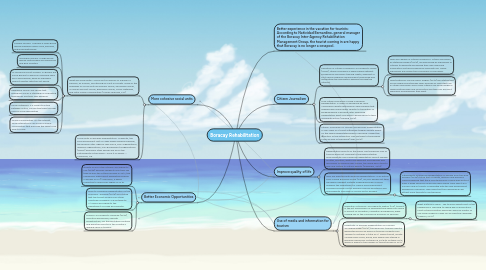
1. Better experience in the vacation for tourists: According to Natividad Bernardino, general manager of the Boracay Inter-Agency Rehabilitation Management Group, the tourist coming in are happy that Boracay is no longer a cesspool.
2. Citizen Journalism
2.1. Definition of Citizen Journalism: According to Glaser (2006), citizen journalism is when people without professional journalism training create, augment or fact-check media by using modern technology and distributing the information globally through the Internet.
2.1.1. Who are capable of citizen journalism?: Citizen journalism, as stated by Rogers (2019), are performed by individuals or citizens to generate and spread their own news and information just like professional journalists do. These individuals are usually the consumers of journalism.
2.1.2. What platforms can be used?: Rogers (2019) also stated that social media revolutionizes news and has an important role in citizen journalism since many citizens use social media in disseminating news and information and they can access it whenever and wherever they want.
2.2. How citizen journalism is used in Boracay Rehabilitation: A video on Facebook by Jerry Villavivencio Buatis featuring an open pipeline that spewed dark murky water directly to the waters of Bulabog Beach in Boracay after supposed rehabilitation went viral which caused DENR to take immediate action (Malasig, 2019).
2.3. Citizen Journalism on Tourism and Boracay Rehabilitation: A viral video of a tourist letting her toddler excrete bowel on the newly rehabilitated beach of Boracay caught the attention of the authorities. This led them to temporarily close an area of the beach (Adel, 2019).
3. More cohesive social units
3.1. What are social units?: Social unit is a person or a group of persons, as a family, functioning as a unit in society. Some of the examples of Social units are Primary Group, Secondary Group, In-Group and Out-Group, Reference Group, Social Networks, and lastly Online Communities. (Lumen Learning, n.d.)
3.1.1. Primary Groups: Typically a small group whose members share close, personal, enduring relationship
3.1.2. Seconday Groups: A large group whose relationships are impersonal and goal oriented.
3.1.3. In-Groups and Out-Groups: In-groups are social groups to which an individual feels he or she belongs, while an individual doesn't identify with the out-group.
3.1.4. Reference Group: Any group that individuals use as a standard for evaluating themselves and their own behavior.
3.1.5. Social Networks: Is a social structure between actors, connecting them through various social familiarities
3.1.6. Online Communities: On the internet, social interactions can occur in online communities that preclude the need to be face-to-face.
3.2. Social units on Boracay Rehabilitation: "Presently, the local government unit of Malay where Boracay belongs, the Boracay Inter-Agency Task Force, civic organizations, religious organizations, non-government oorganizations (NGOs) and many other groups are all for the sustainability of the island – once it re-opens." - Villanueva, n.d.
4. Improve quality of life
4.1. Rehabilitation effects on the island: The temporary loss of tourism does not compare to the huge potential environmental loss if Boracay rehabilitation did not happen as litter, pollution, waste management and beaches was recovered. As Boracay was closed, the island had a time to heal and restore its natural beauty. (Alexander, 2019)
4.2. Who are affected with Boracay Rehabilitation?: In an article from Oxford Business Group (n.d.), 30,000 people lost their job when President Duterte ordered Boracay’s closure however the Department of Labour and Employment provided informal sector workers financial assistance and employability trainings for formal sector workers.
4.2.1. Aftereffects of Boracay Rehabilitation on people from the area: Rendon (2018) stated that residents, workers and business owners believed that the 6-month Boracay closure was worth it even if huge sacrifices financially were made. They saw it as a success and all tourists cooperated with the new government guidelines of Boracay. They hope that the new Boracay will attract more tourists to visit Boracay.
5. Better Economic Opportunities
5.1. Quality of life of the citizens: According to Pile (2018). Boracay residents must feel like they've won the lottery because in 2017, the Philippines' alpha resort generated revenue in excess of US $1.08 billion, a figure predicted to spike even higher in 2018.
5.2. Effects of Boracay Rehabilitation on the economy: Jennings (2019) also stated that the tourist arrivals from other countries increased 7.7% last year to 7.1 million according to the Department of Trade and Industry.
5.3. Tourism: According to Jennings (2019), Investors would build, operate infrastructure, run transportation systems and build the resorts for the country's upward spiral in tourism
6. Use of media and information for tourism
6.1. Definition of tourism: According to Walton (n.d.), tourism is the act and process of spending time away from home in pursuit of recreation, relaxation and pleasure, while making use of the commercial provision of services.
6.1.1. What platforms used?: The tourism department of the Philippines is planning to spend big on promotions. Most of the promotion would be “word of mouth” or use social media as a way for an effective campaign. (Chanco, 2017)
